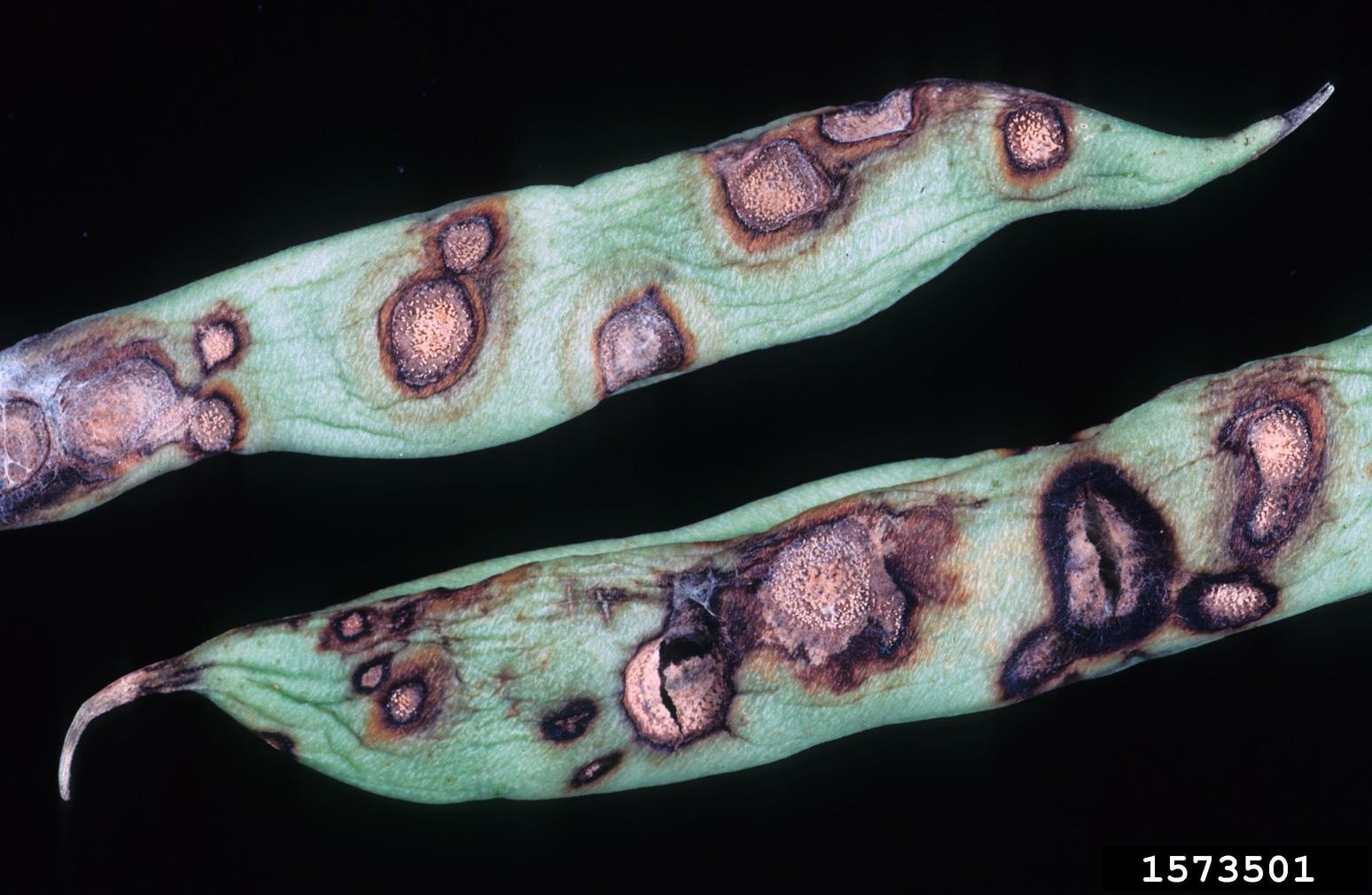Beans Covered With Spots: Reasons For Brown Spots On Beans


Beans are one of the easiest crops in the veggie garden, making even the most beginning gardener feel like a massive success when their beans sprout an unexpected hoard of pods. Unfortunately, every year some beans covered with spots appear in the garden, especially when the weather has been wet. Brown spots on beans are commonly caused by bacterial or fungal diseases; but don't worry, you may be able to save them.
Brown Spot Bean Plant Diseases
Brown spots on beans are common symptoms of bean disease, and many even occur under the same conditions, making it hard to know if the fungal or bacterial disease is your problem. If you look closely though, you may be able to tell the bacterial bean spots from the fungal ones, simplifying treatment.
- Anthracnose of beans causes large brown spots to appear on bean leaves, with damage most severe near the soil line. It may spread quickly, consuming the entire plant if left untreated. When anthracnose-infected beans are picked and brought inside, they quickly develop white fungal bodies on their surfaces.
- Bacterial brown spot starts as small water-soaked spots on foliage, but soon expand into dead areas surrounded by a yellow margin. Sometimes these spots grow into one another or the dead material falls out of the leaf, giving it a tattered appearance. Spots on pods are brown and sunken, and young pods emerge twisted or bent.
- Bacterial blight is a bacterial disease similar in appearance to bacterial brown spot, but water-soaked lesions will also appear on the bean pods. They soon enlarge into rust-colored areas, and under humid conditions may ooze a yellow fluid. Seed abortion or discoloration isn't uncommon.
- Halo blight can be distinguished from other bacterial blights by the red-orange leaf spots surrounded by green-yellow halos that range widely in size. Spots will almost entirely disappear when temperatures exceed 80 degrees Fahrenheit (26 C.). These lesions may ooze cream-colored liquid when the weather is wet.
Treating Spots on Bean Plants
Beans covered with spots aren't usually anything to panic about; they need immediate treatment, but with a quick response, you'll be able to save most or all of your harvest. It's helpful to determine whether the spots you're seeing are caused by a fungus or bacteria so you can choose a chemical that targets that organism. Treat fungal infections using neem oil, applied every 10 days for several weeks. Bacterial diseases are more likely to respond to a copper-based fungicide, but several treatments may be required to produce a suitable harvest. In the future, make sure to steer clear of the bean patch when foliage is wet to reduce the chances of spreading these diseases. Keep bean leaves and other shed material off of the ground, since these dead tissues can harbor pathogens.
Gardening tips, videos, info and more delivered right to your inbox!
Sign up for the Gardening Know How newsletter today and receive a free copy of our e-book "How to Grow Delicious Tomatoes".

Kristi Waterworth was a regular contributor to Gardening Know How for many years, answering countless queries on plant pests and diseases.
-
 Looking For Plants To Give You The Soft And Fuzzies? Try These 5 Fuzzy Leaf Plant Options
Looking For Plants To Give You The Soft And Fuzzies? Try These 5 Fuzzy Leaf Plant OptionsLovers of texture, drama, silver foliage and tactile plants will adore these special sensory garden additions. These fuzzy leaf plant options will leave you all aglow
By Susan Albert
-
 Get Ready For A Summer Of Hummers! Grow These Full Sun Hummingbird Plants and Flowers
Get Ready For A Summer Of Hummers! Grow These Full Sun Hummingbird Plants and FlowersIf you’re lucky enough to enjoy a sunny backyard, make sure you are maxing out on your pollinator opportunities and grow these full sun hummingbird plants and flowers
By Tonya Barnett